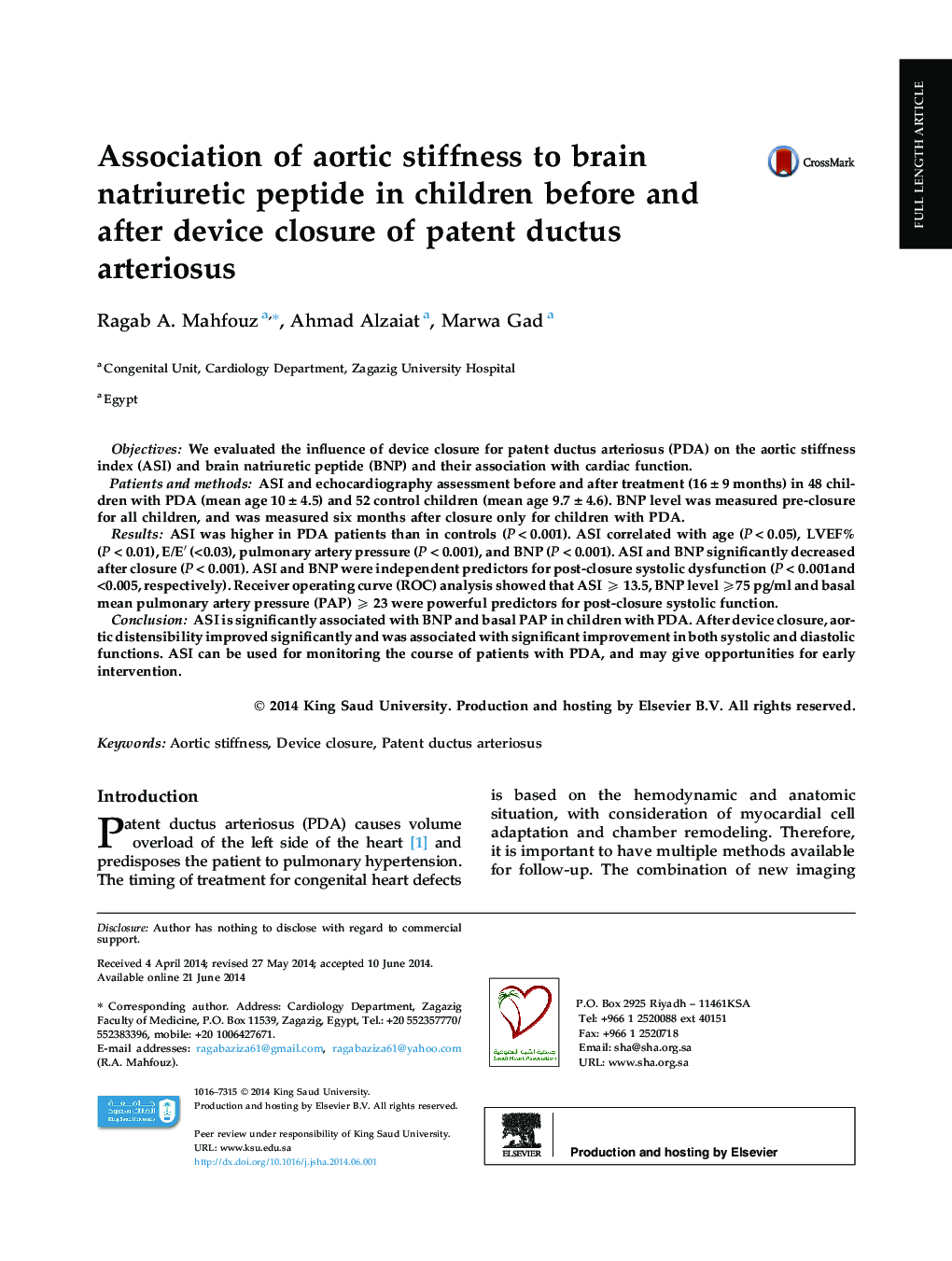| Article ID | Journal | Published Year | Pages | File Type |
|---|---|---|---|---|
| 2978086 | Journal of the Saudi Heart Association | 2015 | 8 Pages |
ObjectivesWe evaluated the influence of device closure for patent ductus arteriosus (PDA) on the aortic stiffness index (ASI) and brain natriuretic peptide (BNP) and their association with cardiac function.Patients and methodsASI and echocardiography assessment before and after treatment (16 ± 9 months) in 48 children with PDA (mean age 10 ± 4.5) and 52 control children (mean age 9.7 ± 4.6). BNP level was measured pre-closure for all children, and was measured six months after closure only for children with PDA.ResultsASI was higher in PDA patients than in controls (P < 0.001). ASI correlated with age (P < 0.05), LVEF% (P < 0.01), E/E′ (<0.03), pulmonary artery pressure (P < 0.001), and BNP (P < 0.001). ASI and BNP significantly decreased after closure (P < 0.001). ASI and BNP were independent predictors for post-closure systolic dysfunction (P < 0.001and <0.005, respectively). Receiver operating curve (ROC) analysis showed that ASI ⩾ 13.5, BNP level ⩾75 pg/ml and basal mean pulmonary artery pressure (PAP) ⩾ 23 were powerful predictors for post-closure systolic function.ConclusionASI is significantly associated with BNP and basal PAP in children with PDA. After device closure, aortic distensibility improved significantly and was associated with significant improvement in both systolic and diastolic functions. ASI can be used for monitoring the course of patients with PDA, and may give opportunities for early intervention.
